

| Genovesa greets us early as we pull ourselves out of bed at 6am Flamingo time (5am Galápagos time) in the hopes of seeing the mid-air thievery by the frigate birds from the nocturnal swallow-tailed gulls returning from their ocean feedings. I see these graceful gulls gliding on their delicate looking wings, as the frigates hover nearby, but not springing into action. The sky is overcast, but the air is peaceful. The mist against my face, the crispness of the air, the waves against our boat and the roar of the engines really made me feel like I'm living at sea. We sail into Darwin Bay, a submerged volcanic crater where the southern wall has collapsed to let in the ocean, and set anchor. |
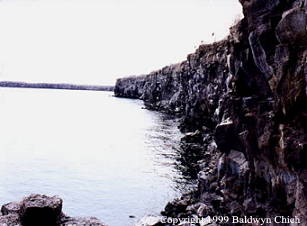 View from Prince Philip's Steps |
Genovesa is remote, and provides the first haven for birds that come from the northeast, feeding on flying fish common to the waters between the Galápagos and Panama. It's remoteness, and the lack of a land tortoise population, and no major source of fresh water has left Genovesa relatively untouched by humans and introduced animals. There simply was no reason for whaling or buccaneer ships to visit its shores.
Our naturalist guide, Renato, had warned us the night before about what to expect on our visit. "I know you people. I know how you like to take pictures of every micro-organism we have on these Islands. You will get very close to these birds. You may think you're very close on the panga, but you will get even closer. Just make sure you bring enough film." These thoughts lingered on my mind as the film whizzed through my camera on the panga ride along the rocky cliffs of the bay. I knew most of my pictures wouldn't even turn out; I was on a boat, attempting to handhold a shot with a telephoto with just way too long of an exposure. But hey, I have to try, what if this is my only chance to see the blue-footed booby, or the closest I'll get to a frigate? Well, over the next week I'll learn my guides are usually right.
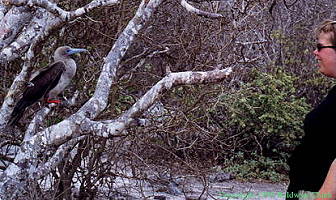 Trisha's close encounter with a red-footed booby |
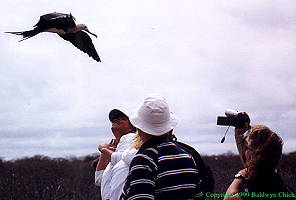 A young frigate bird takes a liking to Buzz's hat |
The trail takes us to a rockier shoreline, where we see hundreds of darting storm petrels over the ocean surface. Here, the volcanic birth of the island is obvious through the cracked landscape, broken lava bubbles, and the rippled, rocky, frozen lava flows.
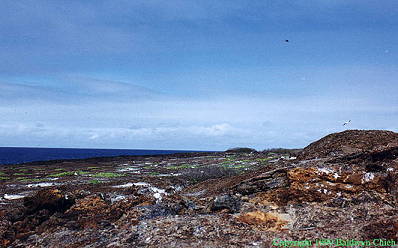
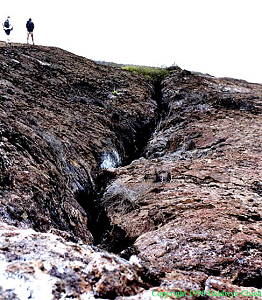
|

|

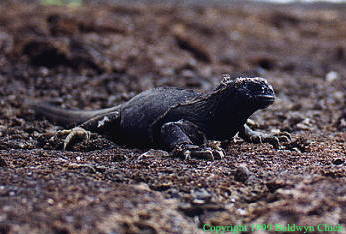
|
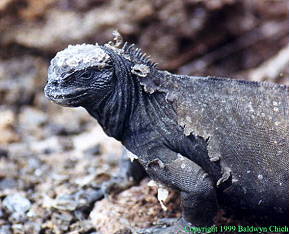
|
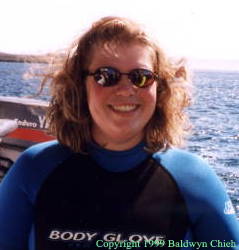 Trisha ready to dive! |
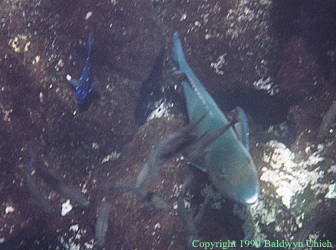 A juvenile damsel fish and a parrot fish |